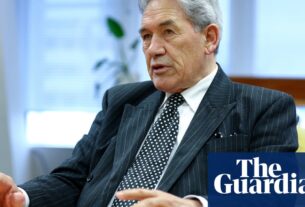A week ago we all asked where Donald Trump’s pain threshold lies when stock markets gagged on their first taste of the president’s tariff “medicine”. Now we have an answer: it is when selling spills into the US government bond market and there is intense talk of negative feedback loops and financial Armageddon.
“The bond market is very tricky, I was watching it … people were getting a little queasy,” said Trump on Wednesday, understating matters wildly as he explained his tariff “pause”.
The reality was that bond markets were in revolt because the world’s richest economy seemingly no longer cared about credibility in policy making or about being the anchor of the world’s financial system. It was prepared to risk recession by declaring a trade war on the rest of the world, including its political allies, on the basis of dodgy formulas and made-up definitions of reciprocity. Technical selling by hedge funds in need of cash probably added to the pressure, but the root cause was political unpredictability.
Attempts by Trump allies to present the chaos as part of a pre-determined artful strategy to bring countries to the negotiating table are absurd. You don’t display negotiating strength by changing your tariffs about twice a day, having your advisers quarrel in public and being forced to partly U-turn because your long-term cost of borrowing has risen.
Relief in financial markets flows from the fact that the bond markets’ enduring ability to intimidate anybody is intact. Some old rules still apply, at least. Worst-case scenarios are off the table after the “pause”.
But let’s not overstate the degree of the U-turn. This was not of the full, Liz Truss-style screeching variety. Baseline universal tariffs of 10% still apply. So do 25% tariffs on automotive imports, we assume. There was no mention of whether the “major tariff” on pharmaceutical imports is still coming. The tariff on Chinese imports has been lifted to a demand-crushing 125%. And the reduced “reciprocal” tariffs only apply for 90 days, so we could do it all again in July if the wondrous trade deals do not appear. If it proves impossible – which is the way to bet – to complete trade deals with 75-odd countries in 90 days, will the “pause” be extended? We don’t know.
Put yourself in the position of an average multinational company and ask how these events will feed into decisions on where and when to invest capital. There will be a default to delay until the terms of trade between the US and rest of the world are settled and then seen to be able to endure. Members of the method-in-the-madness school of Trumpian thought claim the real end goal is lower tariffs with dealmaking, free-trading allies. “We’ll believe that when we see it,” any chief executive in any multinational boardroom would surely respond.
Here’s George Saravelos, the head of foreign exchange research at Deutsche Bank: “Even if the tariffs are permanently suspended, damage has been done to the economy via a permanent sense of unpredictability in policy. More structurally, the events of the last few weeks will resonate among global economic partners during the future negotiations on trade and indeed for many years to come. The desire to build greater strategic independence from the US across all fronts will be here to stay.” That sounds spot on: events of the past week will not be forgotten in a hurry.
Meanwhile, there is an enormous uncertainty over where the escalation with China goes next, and how it may affect growth this year. UBS strategist Bhanu Baweja calculates even the impact of a 10% universal tariff and a 50% Chinese one would mean a hit to GDP and domestic demand “large enough that earnings growth needs to be brought down to low single digits, potentially even flat”.
This is not over.



